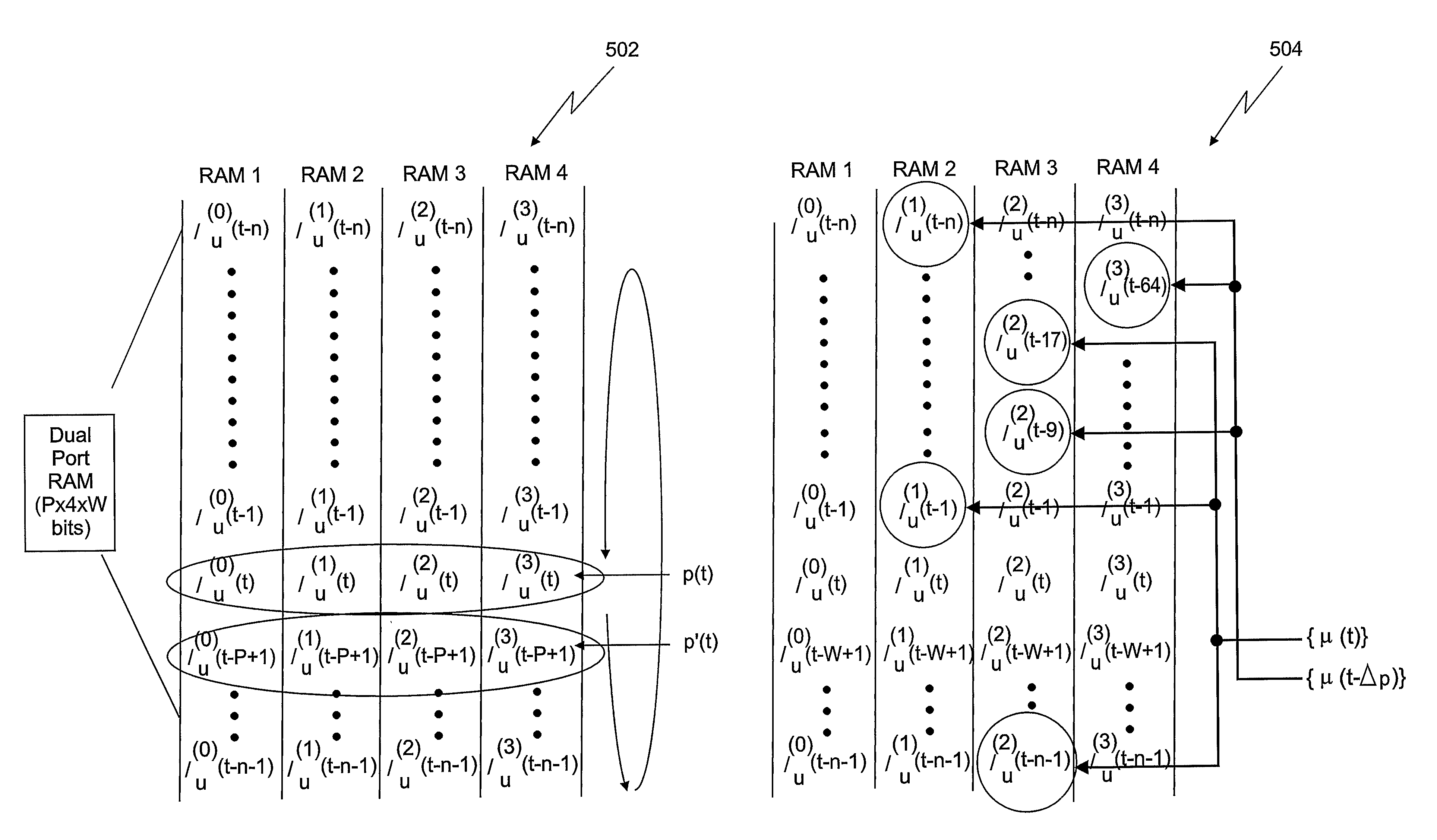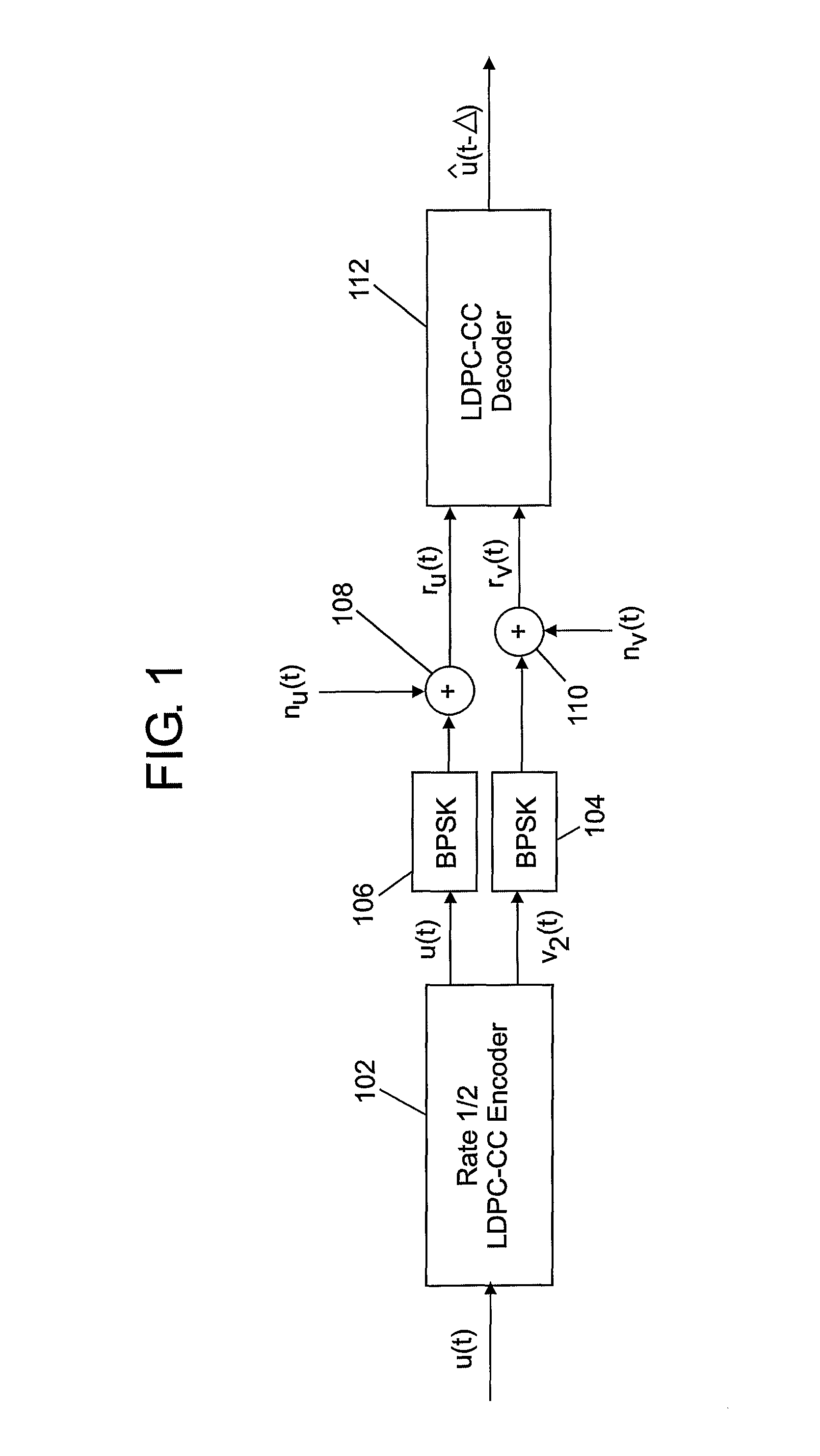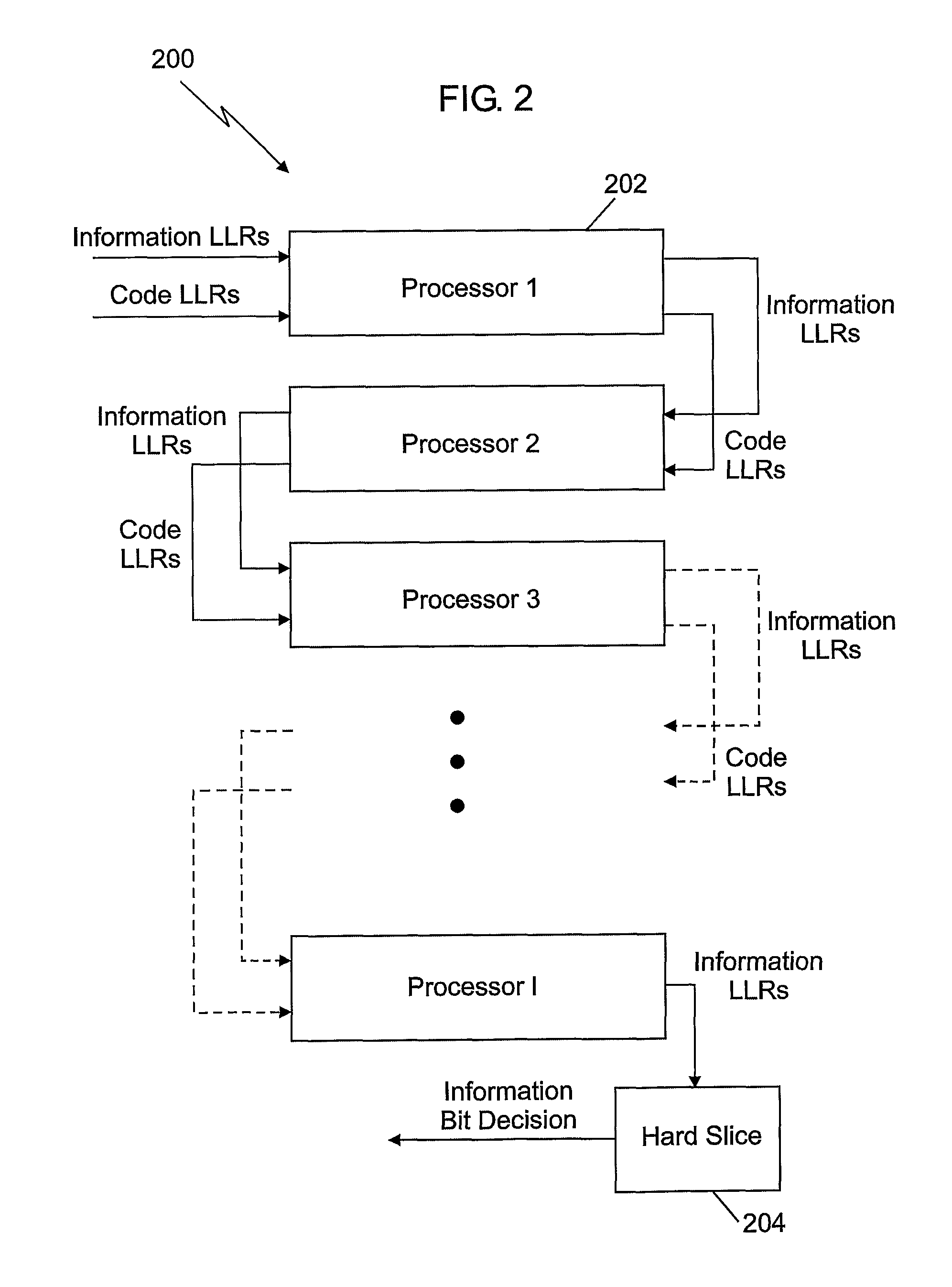Decoder for low-density parity-check convolutional codes
a convolutional code and parity-checking technology, applied in the field of low-density parity-checking convolutional code decoders, can solve the problems of not optimal for fpga and similar semiconductor implementations, register-intensive architectures of ldpc-cc decoders, etc., and achieve accurate decisioning and improve the accuracy of llr values.
- Summary
- Abstract
- Description
- Claims
- Application Information
AI Technical Summary
Benefits of technology
Problems solved by technology
Method used
Image
Examples
Embodiment Construction
[0014]The present invention will now be described in terms of specific, example embodiments. It is to be understood that the invention is not limited to the example embodiments disclosed. It should also be understood that not every feature of the devices or methods described is necessary to implement the invention as claimed in any particular one of the appended claims. Various elements, steps, processes, and features of various embodiments of the invention are described in order to fully enable the invention. It should also be understood that throughout this disclosure, where a method is shown or described, the steps of the method may be performed in any order or simultaneously, unless it is clear from the context that one step depends on another being performed first.
[0015]Most of the terminology used herein is used as would be commonly understood by those of skill in the encoding and decoding arts. For purposes of convenience, it can be assumed for the rest of this disclosure tha...
PUM
 Login to View More
Login to View More Abstract
Description
Claims
Application Information
 Login to View More
Login to View More - R&D
- Intellectual Property
- Life Sciences
- Materials
- Tech Scout
- Unparalleled Data Quality
- Higher Quality Content
- 60% Fewer Hallucinations
Browse by: Latest US Patents, China's latest patents, Technical Efficacy Thesaurus, Application Domain, Technology Topic, Popular Technical Reports.
© 2025 PatSnap. All rights reserved.Legal|Privacy policy|Modern Slavery Act Transparency Statement|Sitemap|About US| Contact US: help@patsnap.com



